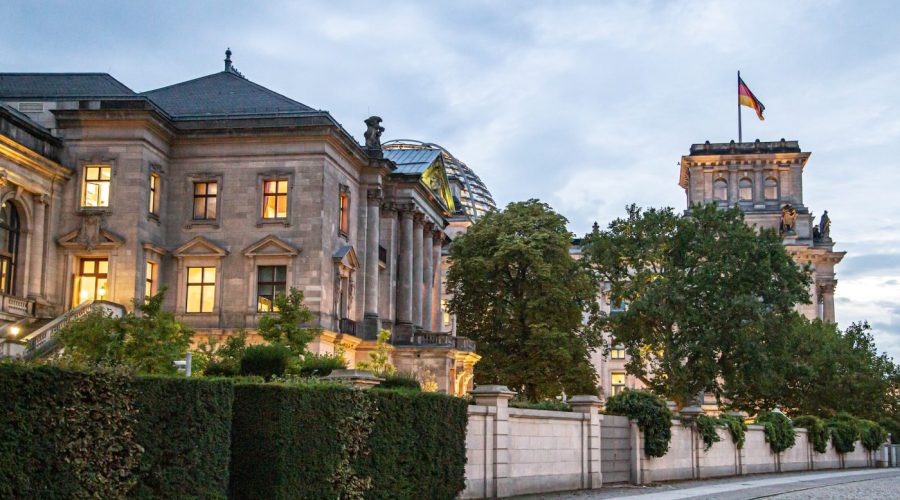Why is the Airlift Monument in Berlin, Germany significant?
The Airlift Monument in Berlin, Germany serves as a practical symbol to optimistic resistance, pointing to a comprehensive epoch in history. In Platz der Luftbrücke (Airport Square) monocunnel stands monument “Die Luftbrücke bringt Freundschaft” flyer) dedicated to the carrier Berlin Airlift 1948-49. Let’s unravel the importance of the Airlift Monument as well as its historical significance.
The Berlin Airlift: Building Blocks of a Monument
The Berlin Airlift was a massive humanitarian operation, envisaged and led by the USA, the UK and other Western Allies to keep West Berlin supplied with it most necessary needs, when it was blockaded by the Soviet Union. By the end of World War II, Germany was broke down into four occupation zones, and so was Berlin. The tensions in between the Soviet Union and the allied powers all escalated to a blockade introduced by the Soviets in 1948.
In order to resist the blockade and keep West Berliners alive, the Allies launched the Berlin Airlift. From morning to night, planes landed on Tempelhof Airport, carrying goods, fuel and other supplies. The operation was a formidable ceiling operation with planes landing and taking off continuously to keep the supply chain going. In the end, the Allies were able to maintain a flow of food supplies to Western Berlin for over a year.
The Airlift Monument commemorate the strength of will and solidarity during those difficult times. It honours the determination of the Berliners and the joint endeavours of the Allied forces against adversity.
Monument Design and Symbolism
The Airlift Monument was commissioned to the German sculptor Eduard Ludwig, and inaugurated, 30 years after the end, of the Berlin Airlift. It is comprised of a silver colored, three part framework, rising proudly at 63 feet (19 meters tall).
The individual sections of the monument represent various parts of the Berlin Airlift. The opening section shows the airplanes involved in the airlift, C-47 Skytrain. The second part is an indication of the flights taken by aircrafts, escenifying in a symbolic way the airways lane between West Germany and West Berlin. The last part shows a relief of the victorious pilot, signifying the triumphal form of the airlift as well as the spirit of those who were involved.
The monument is surrounded by 17 columns each representing 17 of the contributing nations to the airlift. The prominent presence of people/ walls is the embodiment of international collaboration and is a sign of collective responsibility towards the unconditional freedom and wellbeing of others.
Visit the Airlift Monument and Some Nearby places to see
When visiting the Airlift Monument in Berlin, there are a number of other notable places within the area to visit:
1. Tempelhof Airport
Next to the Airlift Monument may be found Tempelhof Airport, which played a large role in the Berlin Airlift. Today the airport has become a public park where has been converted into vast space of recreation and leisure activities. Walk along the runways and enjoy the historical atmosphere of this fascinating place.
2. Allied Museum
Just close to the Airlift Monument, the Allied Museum gives a complete view of the history of the Cold War in Berlin . Find out about eyewitness accounts, artefacts, exhibits about the Berlin Airlift, and the time and context of the post-war.
3. Checkpoint Charlie
Another famous landmark close by is Checkpoint Charlie – the famous border crossing between East and West Berlin during the Cold War era. Discover the story of the Berlin Wall, the city divded and the event on this uniqe checkpoint.
Exploring the Airlift Monument and linked sites makes for a wonderful and historical experience and the history of Berlin as you know it. It is a symbol of triumph of human will over calamity, of significance of global co-operation.
Conclusion
The Airlift Monument in Berlin Germany symbolises the determination and unity shown during the Berlin Airlift. It commemorates the mutual work of the Allies and the unbroken spirit of the Berliners that coped with the hardships of the Soviet blockade. Even as you see this memorial and walk around it, you will gain a deep value for the sacrifices made and for the enduring significance of this historic occasion.
Table of Contents



